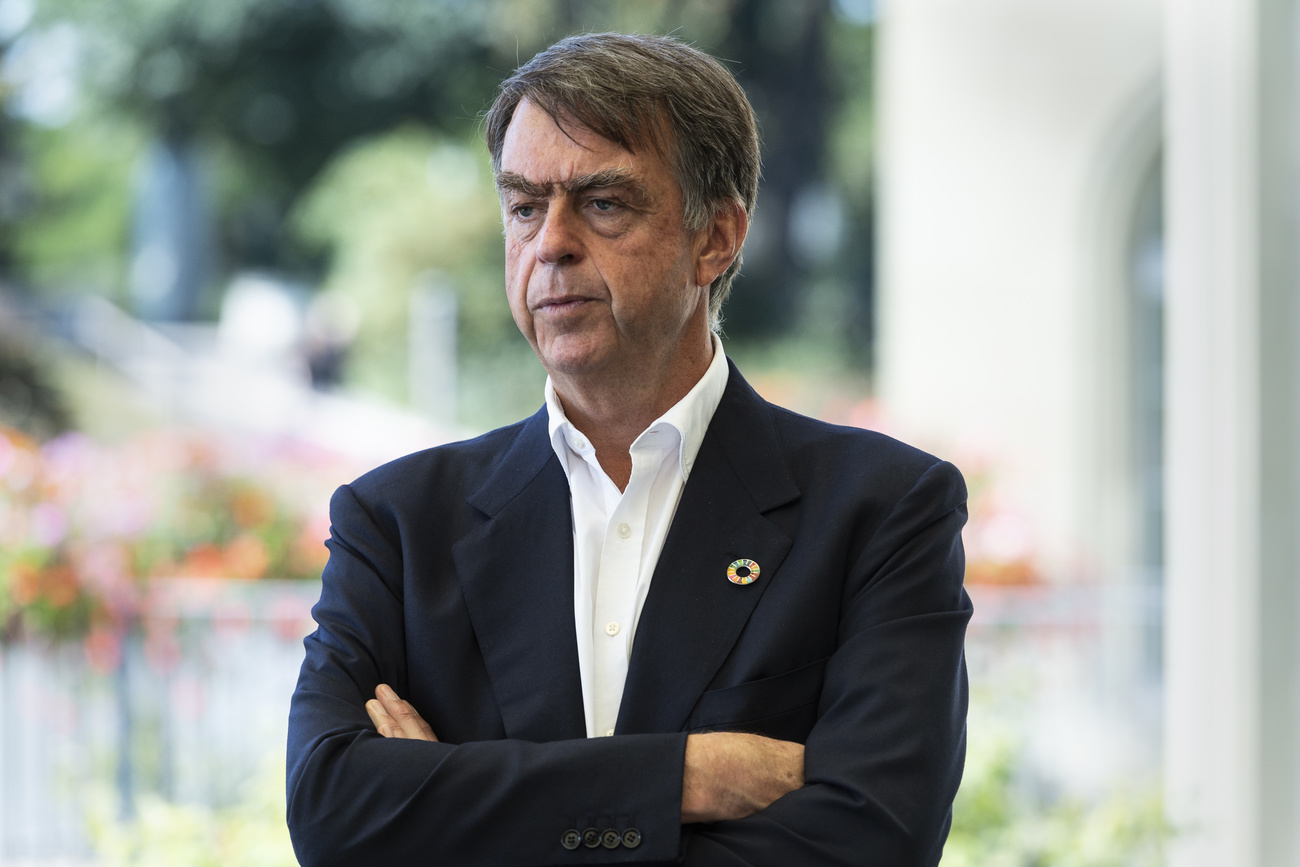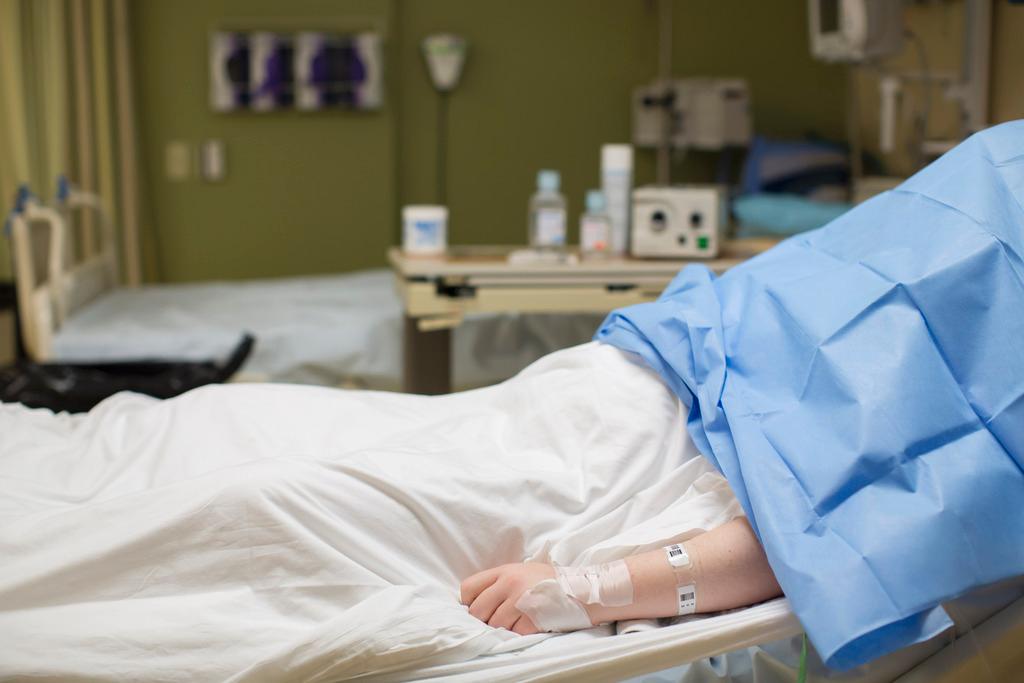The children given a second shot at life

A liver transplant saved Liz Schick’s life in 1998. Today she runs camps to give children in the same position new life-affirming experiences.
In Anzère’s snow-clad village square, children are preparing to race down a nearby slope. Passers-by wouldn’t have found the scene extraordinary. But it’s a big moment for a child who has a brush with death.
For those 45 youngsters from 15 countries, skiing in Switzerland would have unimaginable some time ago. Their ability to take part in an adventure camp in the canton Valais mountain resort was a tribute to the donors whose kidneys, hearts, livers or lungs saved their lives.
Robbie Lyons, 20, came from Ireland to volunteer. He first attended the camp in 2011 after a kidney transplant. “The camp was very important to me – it was a massive thing so soon after the transplant,” he remembers. “It’s about getting out there and meeting other children who’ve had similar experiences. It shows you you’re not alone.”
Ambassadors
The annual winter camps are organised by Tackers, an association that operates under the umbrella of Swisstransplant, the national foundation for organ donation and transplantation. Tackers was set up by Liz Schick, a British woman who settled in Anzère when she was 18. In 1998, Schick was in London. One day she was jogging in Hyde Park, the next she was doubled up in pain. Soon after, she learned that her liver was riddled with tumours. She was 35 and the mother of two young children.
Schick had a liver transplant nine months later at canton Vaud’s university hospital in Lausanne, and has since devoted herself to promoting organ donation and transplantation.
Since 2002, several hundred young people from more than 30 countries have attended Tackers’ camps. The goal: to build a support network, gain independence and boost their battered self-esteem by trying new sports. The camps are financed by corporate and private donations and supervised by volunteers, including medical staff. Some children come to Tackers through associations they belong to, sometimes families contact Schick directly.
“Young people are the best ambassadors for raising awareness of the quality of life that can be enjoyed after a transplant,” Schick says.
Sairi Minagawa, a 13-year-old Japanese girl, is a good example. Four years ago, she passed out on a hotel bed in Singapore during a family holiday. A doctor announced she would need a liver transplant within 48 hours. Sairi was flown to Japan, where her parents found a specialist.
“I didn’t know I was going to have a transplant, I was too sick by then,” remembers Sairi. “When I woke up, I was in hospital and I had a scar. I was surprised but happy to be alive.” With an eloquence beyond her years, Sairi explains how the experience made her aware that life is fragile and should be lived to the full. “I challenge myself all the time,” she says with a smile.
Scarred but happy
Spending time with other transplantees helped 16-year-old Yakov Varsulklar from Israel overcome a life-long complex. When Yakov was 10 months old, he had a liver transplant and brain cancer. Before the camp, he had never taken off his shirt in public. The voluntary fire fighter with a passion for DJing is visibly delighted as he recounts how he swam shirtless at a spa with the other Tackers participants. “We’re all equal here and I’m not ashamed of my scar,” he says.

Nearby, pink-cheeked, blue-eyed Phoebe Pace, four, is making angels in the snow. One day in 2011, her mother Lesley-Anne noticed her eyes were tinged with yellow. Tests, blood samples and ultrasound scans followed. Phoebe’s condition worsened as medical staff tried to find the cause. When her daughter suffered acute liver failure, Lesley-Anne was warned that the toxins building up in Pheobe’s system would affect her other organs, causing permanent damage or killing her.
A donor was found just in time.
“I’m still in shock,” Lesley-Anne says. “I can’t believe it happened and that we’re here. Many positives have resulted from the transplant, she adds. They have made many new friends and Phoebe enjoys being part of a team that competes at the British Transplant Games.
“The whole point of Phoebe being given the liver was to make sure she uses it to its full potential, so she’s swimming, dancing, having fun and taking part in all those games. And showing it respect.”
The liver from Phoebe’s 42-year-old male donor was split and saved two lives. Soon after Phoebe’s operation, the transplant coordinator gave Lesley-Anne a very emotional letter from a 75-year-old woman called Bonnie who had received the other part of the liver. “She had been told: ‘A liver is arriving for a young child – if it can be split, you will have a part, if we can’t, it’s going to her,’” Lesley-Anne explains.
Phoebe’s eyes lit up when Bonnie’s name was mentioned. They have met and are still in touch. “Phoebe calls Bonnie her liver sister,” laughs Lesley-Anne. “It’s bizarre to see them in the same room because they’re running on the same body part.”
Children first
According to Franz Immer, director of Swisstransplant, children are often prioritised in organ allocation. That is the case for livers and kidneys, the organs most commonly transplanted into children.
“Kidney recipients aged up to 20 have absolute priority,” Immer told swissinfo.ch. “If a liver donor is under the age of 50, the organ is allocated, as a split organ whenever possible, to a child [weighing] less than 25 kilograms; if the donor is over 50, it goes to the patient at the top of the waiting list.”
A liver cannot always be split. The age of the donor and various anatomical aspects are taken into account. Lungs are the only other organs that are sometimes shared between two patients. For heart transplants, donors and recipients must be of a similar age and weight.
In Switzerland in 2014, 23 organs were transplanted into 21 children: three hearts, two lungs, eight kidneys and nine livers. One child received pancreatic islets.
“Since the current system of organ allocation was introduced three years ago, there has been a zero per cent mortality rate among children in liver transplantation in Switzerland,” Immer added.
Last year an average of two people died every week in Switzerland because of the lack of available organs. The waiting list swelled from 1,274 in 2013 to 1,370 in 2014. The number of donors also went up from 13.6 per million inhabitants in 2013 to 14.4 per million. But that’s roughly half the European average. The government’s action plan, “More organs for transplantation”, aims to increase the number of donors to 20 per million inhabitants by 2018. The plan includes obligatory communication training for hospital personnel charged with approaching relatives about organ donation. Asked about the current status of the plan, Franz Immer, director of Swisstransplant, said: “We’re now ready to launch blended learning – nine modules that will be mandatory for people in charge of donation at hospitals.”

In compliance with the JTI standards
More: SWI swissinfo.ch certified by the Journalism Trust Initiative












You can find an overview of ongoing debates with our journalists here . Please join us!
If you want to start a conversation about a topic raised in this article or want to report factual errors, email us at english@swissinfo.ch.